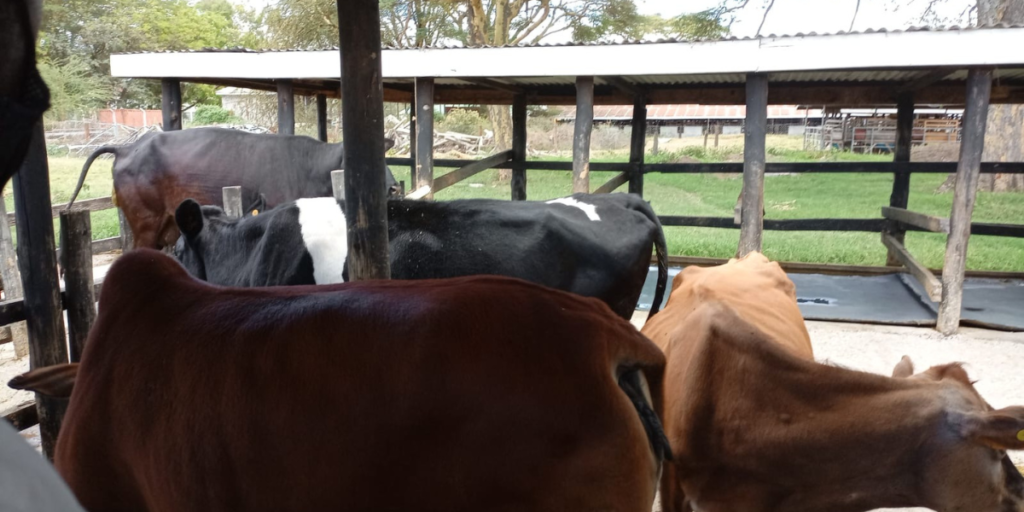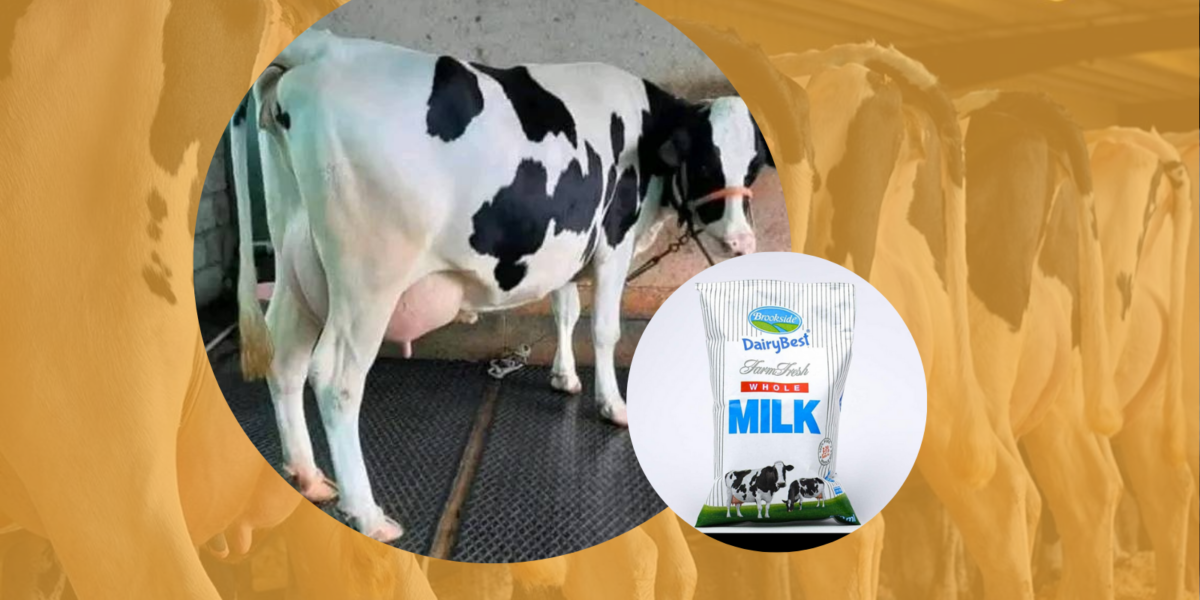Dairy farming is among the best ventures one can embark in in Kenya. All you need to get started is the right information in terms of market research, the best breeds to keep and of course, the right amount of resources in terms of capital.
The good news is that you can embark on dairy farming whether as a seasoned farmer or a complete beginner. Below is a step-by-step guide on how to maximize your chances of agribusiness success in dairy farming.
What To Do Before Starting a Small-Scale Dairy Farm in Kenya
Before venturing into dairy farming, there are a few things you have to do to increase your odds of success in the venture, among them being:
*Market research – Be sure who will be your market by engaging those who have been in the business for a while or getting expert advice.
*Financial resources – Another prerequisite is making sure that you have the right financial resources, attained through the savings you have or borrowing from banks and Saccos.
*Production scale – The production scale is another key consideration whether you are to do it on a small scale or large scale.
*Viability – A financially viable farm set up should contain at least 5 dairy cattle to ensure sustainability of the business model.
*Feeds – Feeds can make or break your farm. Be sure to make prior arrangements for adequate feeds well before you bring any cattle into your farm.
Housing and Structure

If you want to attain success as a dairy farmer then a proper structure is key. As such, you should start by making arrangements for a proper structure for your cattle as this guarantees their comfort and reduces the risk of diseases. Wondering how a simple cow shed should look like? Well, a good set up should entail the following depending on your preferred style of grazing – whether it be zero grazing, semi-zero grazing, or open field grazing.
- Proper ventilation – Your structure should provide free airflow to protect your cow from respiratory disease.
- Drainage – Your shed should be properly drained with a gently sloping floor to allow the free flow of urine and wastewater from the shad.
- Spacious – The cattle shed should be designed in such a way to allow ample space for the cow. That is about three square meters per head.
- Roofing – Use iron sheets or grass thatch for the roof to make sure that your cow is well protected against rains.
- Milking parlor – The milking area should be adjacent to the shed but separate.
- Walls – The side walls should be about 1.2 meters and partially open to enhance ventilation. A concrete floor is ideal.
- Watering area – Fit it with troughs and clean water safe for your animals.
Capital Outlay for 10 Cows (Zero-Grazing Set Up)
Below is an estimated start-up cost for ten dairy cows.
| Item | Estimated cost |
| Housing and structure | 250000 |
| Feeds | 200000 |
| Veterinary services | 50000 |
| Purchase of Heifers x10 | 1500000 |
| Labour | 100000 |
| Milking equipment | 250,000 |
| Total | 2,300000 |
Suitable Location
Dairy farming, unlike others, is highly dependent on the geographical location where it is practised. Choose a site mostly on the highlands like Uasin Gishu, Nyandarua, Kiambu, Nyeri, Kisii, Nakuru, Meru and Muranga among other places.
Choosing The Right Breed for your Dairy Farm

The success of your dairy project is highly determined by the cattle breed you keep. You can source your dairy breeds from reputable institutions like KALRO Naivasha, and KALRO Nakuru, you can also get fully viable sperm for AI from the Kenya Animal Genetic Resource (KAGRC). Among the best-performing dairy breeds include;
| Breed | Characteristics |
| Friesian | Black and white in color, Docile and easy to handle, can not tolerate heat ,high milk production ,can respond well to improved technology. |
| Jersey | 15-25 liters of milk per day, high milk butterfat, fawn to light brown, hardy i.e. can graze highly adaptive to any environment. Early maturity, and high fertilization rates. |
| Guernsey | Fawn and white,15-25 liters a day, efficient feed converter, milk with a characteristic yellow colour, Docile and easy to handle. |
| Ayrshire | Red and white in colour,20-30 liters of milk per day, alert and quite stubborn, |
| Frieswal (a cross between Sahiwal and Friesian) | Medium body size but muscular produces up to 15 liters per day, heat tolerant, disease tolerant. |
Feeds and Nutrition
Feeds are a critical point of consideration when setting up a dairy farm. You should always grow or acquire a variety of food items for your cattle especially roughage e.g. napier grass and lucerne which should make up the bulk of your daily feed. You should also supplement this with concentrates like dairy meal, oil seed cake, wheat bran, and cotton seed cake to supplement their energy, and of course minerals and supplements.
Formulate your feeds appropriately that is according to the different stages of growth and lactation and adjust your cow’s diet depending on different production stages. Give your animals enough water (approximately 50 litres per head per day) since it is a large component of milk.
Make silage to store excess supply of feeds within the farm for later use.
Milking and Milk Handling
After your cow has calved, the most critical part is how you are going to handle milk. You first need to separate the calf from the mother into a calf pen and ensure that it is fed enough colostrum for the first six months constantly to avoid the development of scours (diarrhea) which is a leading cause of death among calves.
Milk should be handled carefully and a high level of sanitation should be maintained. Your milk personnel and milking equipment should be clean and sterile. Filter your milk carefully to remove any contaminants and solid particles. Ensure you store your milk well under 4°c immediately after milking awaiting processing and consumption.
Common Diseases and their Treatment
| Disease | Signs and Symptoms | Prevention and treatment * |
|---|---|---|
| Brucellosis | Stillbirth, retained placenta, abortion in late stages of pregnancy, testicular abscission in bulls | Vaccination, screening, and eradication. |
| Mastitis | Reduced milk production, swollen udder, bloody/ coloured milk, pain in the udder | Dry cow therapy, proper milking techniques, use of teat dip cups, and culling under chronic conditions. |
| East coast fever | Swollen lymph nodes, fever, loss of appetite. | Control of ticks, vaccination. |
| Foot and mouth disease | Wounds in the mouth, careful and long chewing, extreme salivation, high fever. | Vaccination, no known treatment but mild dressers like molasses and magadi soda can help. |
| Lumpy skin disease | Swollen udder and testicles, circular firm nodules, Tongue and gum lesions, Abortion, secondary mastitis, lowered milk production, severe emaciation, loss of fertility, | Vaccination, slaughter of infected animals, quarantine of sick animals, use of antibiotics for secondary infection. |
| Bloat | The animal stops grazing and becomes reluctant to walk ,the left side of the abdomen is distented ,straining during urination and defeacation. | Puncturing a hole into the rumen to remove trapped air, use of stop bloat, pasture management. |

Marketing
You can market your milk directly to milk processing plants like KCC, Limuru Milk, Mt Kenya milk, Brookside among others or sell directly to final consumers like schools and hospitals.
You can opt to start a milk ATM to help sell the milk directly to the consumers which to a good extent is a plus. Value addition e.g. converting the raw milk into cheese, yoghurt and butter is lucrative as well.
Potential Profitability
Dairy farming can be profitable if done right. For instance, a high-grade Fresian cow can produce an average of 25 liters of milk per day. With ten such heifers in a farm, and working with a farmgate price of Ksh50 per litre, that’s a potential of Ksh12,500 in gross milk sales per day.
A well run farm with 10 dairy cows can yield about Ksh 200,000 per month.
Conclusion
With proper planning and innovative marketing, dairy farming can provide consistent income and long-term returns on your input. If you’re considering dairy farming, start with a solid business plan, invest in quality breeds and good management, and focus on proper market research for your milk. Success in dairy farming is entirely in your hands!
Generate a Business Plan (PDF) for your Dairy Farming Idea Instantly
10-Page Plan for Just Ksh50/- per PDF.

With a BSc in Agricultural Biotechnology, Dennis is a results-oriented author who draws extensively from his farm management experience. When he’s not working on the farm or contributing to the Bizsasa platform, he enjoys watching soccer with friends.
